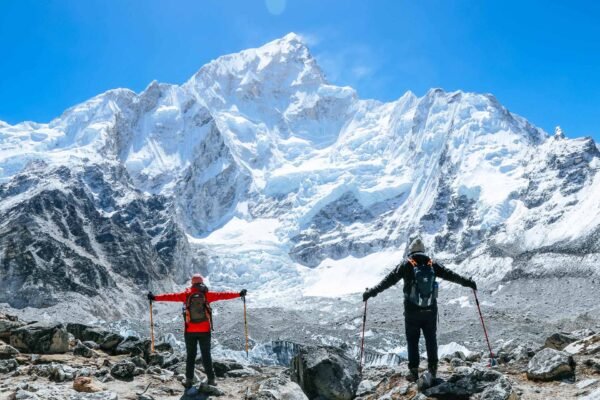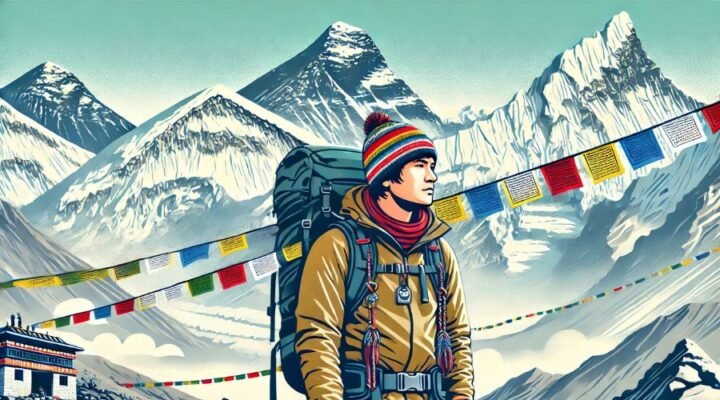Ultimate Guide to Everest Base Camp Trek for Backpackers
Embarking on the Everest Base Camp (EBC) trek is a dream for many backpackers, offering an unparalleled adventure through the heart of the Himalayas. This comprehensive guide provides essential information to help you plan and execute a successful trek to EBC.
Ultimate Guide to Everest Base Camp Trek for Backpackers: Overview of the Trek
The journey to Everest Base Camp covers approximately 130 kilometers (round trip) and typically takes about 12-14 days to complete. Starting from Lukla, situated at an altitude of 2,860 meters, trekkers ascend to the base camp at 5,364 meters. The trek offers breathtaking views of some of the world’s highest peaks and an immersive experience into Sherpa culture.
Best Time to Trek
The optimal periods for the EBC trek are pre-monsoon (March to May) and post-monsoon (September to November). During these months, the weather is generally stable, and the skies are clear, providing excellent mountain views.
Permits and Regulations
To trek to EBC, you’ll need the following permits:
-
TIMS Card: Trekkers’ Information Management System card.
-
Sagarmatha National Park Entry Permit: Required for entering the national park where EBC is located.
These permits can be obtained in Kathmandu or at the park’s entrance. Ensure you carry multiple passport-sized photos and copies of your passport for the application process.
Ultimate Guide to Everest Base Camp Trek for Backpackers: Physical Preparation and Acclimatization
The EBC trek is moderately challenging, requiring good physical fitness. It’s advisable to engage in cardiovascular and strength training exercises several months before the trek. Acclimatization is crucial to prevent Acute Mountain Sickness (AMS). Incorporate rest days into your itinerary, particularly in Namche Bazaar and Dingboche, to allow your body to adjust to the altitude.

Typical Itinerary
A standard itinerary might look like this:
-
Day 1: Fly from Kathmandu to Lukla; trek to Phakding.
-
Day 2: Trek to Namche Bazaar.
-
Day 3: Acclimatization day in Namche Bazaar.
-
Day 4: Trek to Tengboche.
-
Day 5: Trek to Dingboche.
-
Day 6: Acclimatization day in Dingboche.
-
Day 7: Trek to Lobuche.
-
Day 8: Trek to Gorak Shep; visit Everest Base Camp.
-
Day 9: Ascend Kala Patthar; descend to Pheriche.
-
Day 10: Trek to Namche Bazaar.
-
Day 11: Trek to Lukla.
-
Day 12: Fly back to Kathmandu.
This schedule includes essential acclimatization days to reduce the risk of AMS.
Accommodation and Food
Along the trail, teahouses provide basic accommodation and meals. Rooms are typically shared, with communal dining areas. Meals include local dishes like dal bhat, as well as international options such as pasta and pancakes. It’s advisable to carry some snacks for additional energy.
Ultimate Guide to Everest Base Camp Trek for Backpackers: Budgeting for the Trek
While costs can vary, a budget trek to EBC may include:
-
Permits: Approximately $50.
-
Accommodation and Meals: $20-$30 per day.
-
Guide/Porter: Optional, but if hired, expect to pay $20-$30 per day.
-
Miscellaneous: Additional expenses for Wi-Fi, charging devices, and hot showers.
Overall, budgeting around $1,000-$1,500 is reasonable for the entire trek.
Packing Essentials
Key items to pack include:
-
Clothing: Layered clothing to accommodate temperature variations.
-
Footwear: Sturdy, broken-in trekking boots.
-
Gear: Sleeping bag rated for cold temperatures, trekking poles, and a daypack.
-
Accessories: Sunglasses, sunscreen, and a hat for sun protection.
Many items can be rented or purchased in Kathmandu if needed.
Ultimate Guide to Everest Base Camp Trek for Backpackers: Health and Safety Tips
-
Hydration: Drink plenty of water to aid acclimatization.
-
Pacing: Trek at a comfortable pace to avoid exhaustion.
-
Insurance: Obtain travel insurance that covers high-altitude trekking and emergency evacuation.
Trekking to Everest Base Camp is a rewarding endeavor that offers stunning landscapes and cultural insights. With proper preparation and respect for the mountain environment, backpackers can safely enjoy this unforgettable journey.

Ultimate Guide to Everest Base Camp Trek for Backpackers: Trekking to Everest Base Camp isn’t just about reaching a destination—it’s a deeply personal journey filled with challenge, reflection, and awe. The raw beauty of the Himalayas, the warmth of the Sherpa people, and the simplicity of life on the trail create memories that last a lifetime. Whether you’re chasing a lifelong dream, seeking solitude, or craving high-altitude adventure, this trek delivers all that and more. With proper planning, respect for the mountains, and an open heart, the Everest Base Camp trail will reward you with a truly transformative experience—one that speaks to the soul of every backpacker.
Follow us to stay updated with the latest information: Asia Backpack Travel
Read more:
Japan tourist visa application: How to Easily Apply
Preparing for a trip to South Korea What to Prepare for Traveling to South Korea?
